Campaign and rival plans come as Corstorphine & Wright submits towers scheme
Three winners of the most prestigious prize in British architecture have lent their names to a campaign to save a brutalist landmark in Birmingham city centre that faces demolition to make way for 2.300-home proposals designed by Corstorphine & Wright.
James Roberts’ 1960s Ringway Centre on Smallbrook Queensway is one of the few remaining examples of Birmingham brutalism, and was completed five years before Roberts’ most famous work: the grade II-listed Rotunda.
A campaign to save the now-vacant lower-rise Ringway Centre by repurposing it for commercial and residential use has begun, coinciding with the submission of the Corstorphine & Wright proposals. That scheme, drawn up for developer Commercial Estates Group, was trailed over the summer and features towers of 44, 48 and 56 storeys respectively.
Stirling Prize-winning architects Níall McLaughlin, Peter St John, and Steve Tompkins are among those backing the effort to save the Ringway Centre, which is locally listed but currently also subject to a Certificate of Immunity from Listing that still has the best part of five years to run.
McLaughlin, St John and Tompkins, whose practices won the Stirling Prize in 2022, 2016 and 2014 respectively, are signatories to a letter calling on Birmingham City Council and West Midlands Combined Authority mayor Andy Street to reject the Corstorphine & Wright proposals. Low-carbon expert Simon Sturgis has also signed the letter.
The campaign is a collaboration between the Twentieth Century Society and city-based groups Brutiful Birmingham, Birmingham Modernist Society and Zero Carbon House. It highlights the Ringway Centre’s status in local and national architecture, as well as the carbon implications of demolishing the unique structure to make way for a completely new scheme – set alongside Birmingham and WMCA’s commitments on net-zero.
The letter concludes: “We urgently call on the city council and the WMCA to reject the proposed demolition of this building and advocate for more sympathetic repurposing respecting its heritage value and avoiding the release of large amounts of carbon into the atmosphere.”

The campaign’s rival scheme would retain and repurpose the Ringway Centre, converting the building’s upper storeys for residential use and adding three 20-storey towers that “pay homage” to the Rotunda at the rear.
The proposals anticipate delivering around 450 apartments of varying sizes. They have been illustrated by Michael Dring, founder of Birmingham Modernist Society and senior lecturer at Birmingham City University’s school of architecture and design.
Costorphine & Wright’s planning application for the Ringway Centre’s redevelopment seeks detailed consent for the scheme’s 48-storey block, which it says would contain 571 build-to-rent apartments, along with mixed retail, leisure and commercial uses.
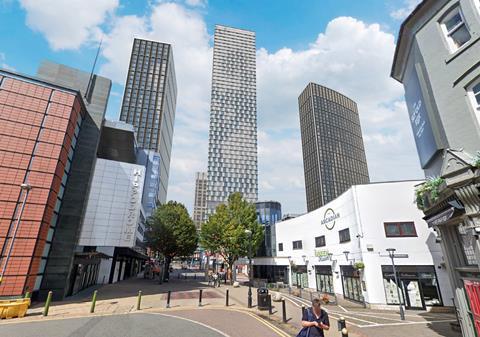
It also seeks outline consent for the two further towers, which would contain a total of 1,750 apartments and 7,000sq m of commercial space. The design and access statement supporting the application said there would be potential to deliver a further 1,109 new homes on the site, above mixed ground-level uses.
The proposals are currently out to public consultation. Birmingham City Council has yet to indicate a target determination date.
CEG floated plans for the partial demolition of the Ringway Centre in 2017. Designs by NORR Architects proposed the removal of roughly half of the 240m-long structure – including its bridge over Hurst Street – to make way for a 26-storey tower and nine-storey shoulder building.
The C20 Society and Birmingham Civic Society both opposed the plans at the time.









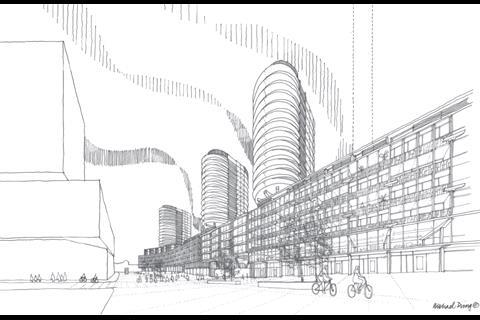
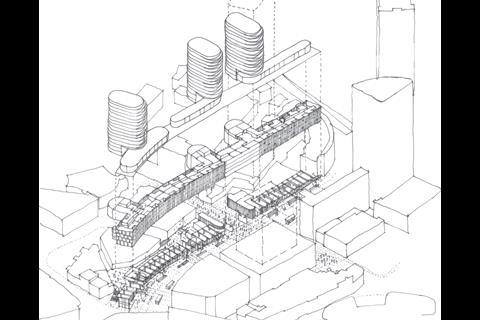





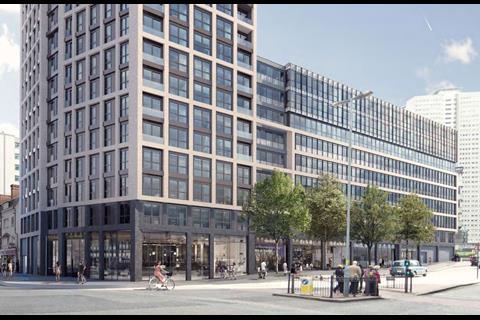
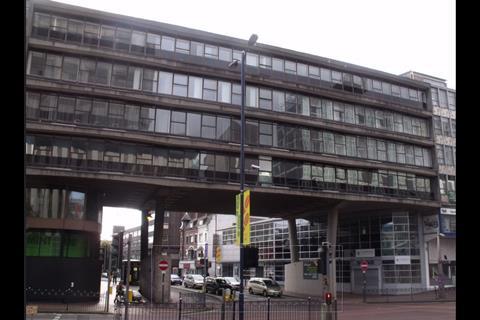
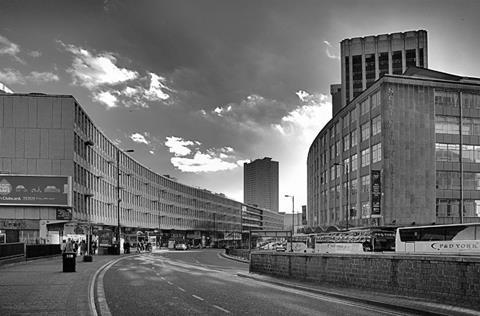
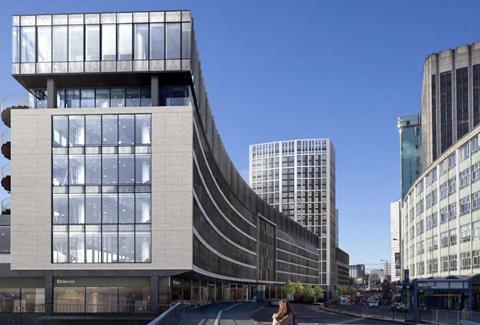







No comments yet